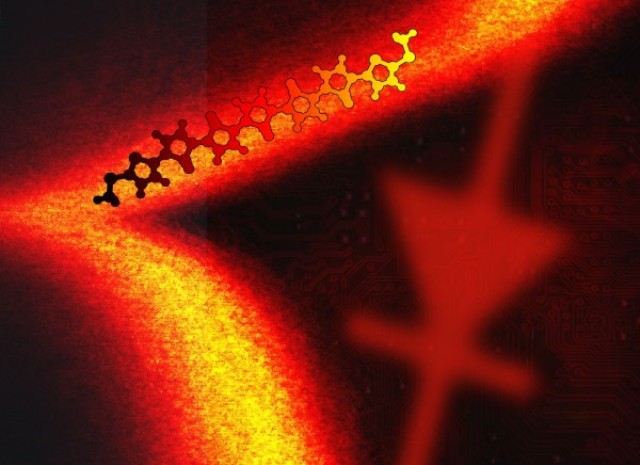
This new method enabled the researchers to create molecular diodes capable of delivering a level of performance 50 times better than all previous designs. The research team at Columbia Engineering have become the first people in the world to fabricate a single-molecule diode, paving the way for practical technological applications of nanoscale devices.
Our new approach created a single-molecule diode that has a high (>250) rectification and a high “on” current (~ 0.1 micro Amps).
Latha Venkataraman
Associate Professor of Applied Physics at Columbia Engineering
“Constructing a device where the active elements are only a single molecule has long been a tantalizing dream in nanoscience. This goal, which has been the ‘holy grail’ of molecular electronics ever since its inception with Aviram and Ratner’s 1974 seminal paper, represents the ultimate in functional miniaturization that can be achieved for an electronic device.”
The increasing miniaturization of electronic devices has made the field of molecular electronics more important than ever before, with single molecules representing the ultimate limit of miniaturization.
Arieh Aviram and Mark Ratner first proposed the concept of developing a single-molecule diode. According to their 1974 seminal paper, it is possible for a molecule to behave like a rectifier, which conducts electric current in only one direction.
Since 1974, the charge-transport properties of molecules have been investigated by researchers worldwide. It has also been demonstrated that attaching single-molecules to metal electrodes (single-molecule junctions) enables a range of circuit elements such as transistors, switches, resistors and even diodes. Quantum mechanical effects such as interference can also be clearly observed in the conductance properties of molecular junctions.
The structure of a diode must be asymmetric. The environment experienced by the electricity flowing in one direction must be different from that experienced by the electricity flowing in the opposite direction. As a result, molecules with a asymmetric structure have been designed in order to create a single-molecule diode.
While such asymmetric molecules do indeed display some diode-like properties, they are not effective.
Brian Capozzi
PhD Student at Columbia Engineering and Lead Author of the Paper
“A well-designed diode should only allow current to flow in one direction—the ‘on’ direction—and it should allow a lot of current to flow in that direction. Asymmetric molecular designs have typically suffered from very low current flow in both ‘on’ and ‘off’ directions, and the ratio of current flow in the two has typically been low. Ideally, the ratio of ‘on’ current to ‘off’ current, the rectification ratio, should be very high.”
Creating an environmental asymmetry around the molecular junction was the focus point of Venkataraman and her collaborators to address the problems involved in an asymmetric molecular design.
The environmental asymmetry was created by the researchers using a simple technique, in which the active molecule was surrounded by an ionic solution and contacted by means of different sizes of gold metal electrodes.
The novel approach resulted in a single-molecule diode with rectification ratios up to 250, which is 50 times greater than previous designs. The device has over 0.1µA“on” current flow, which is a much higher current that can be passed through a single molecule. Additionally, the easy implementation of this innovative technique means that it is applicable to all types of nanoscale devices, including devices made with graphene electrodes.
“It’s amazing to be able to design a molecular circuit, using concepts from chemistry and physics, and have it do something functional,” Venkataraman says.
The length scale is so small that quantum mechanical effects are absolutely a crucial aspect of the device. So it is truly a triumph to be able to create something that you will never be able to physically see and that behaves as intended.
Latha Venkataraman
Associate Professor of Applied Physics at Columbia Engineering
Currently, Venkataraman and her research team at Columbia Engineering are striving to understand the fundamental physics which underpins their innovation and improve the rectification ratios using new molecular systems.
The study results have been published in the May 25 issue of the journal Nature Nanotechnology, in a paper entitled "Single-Molecule Diodes with High On-Off Ratios through Environmental Control".